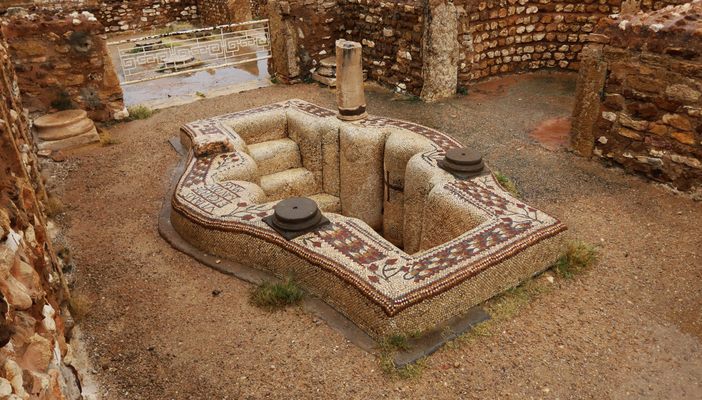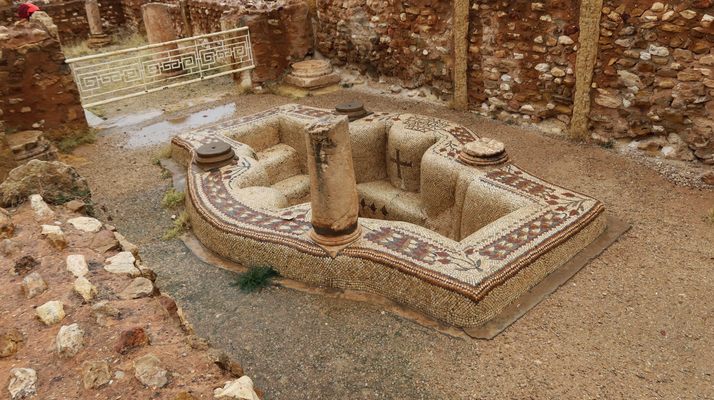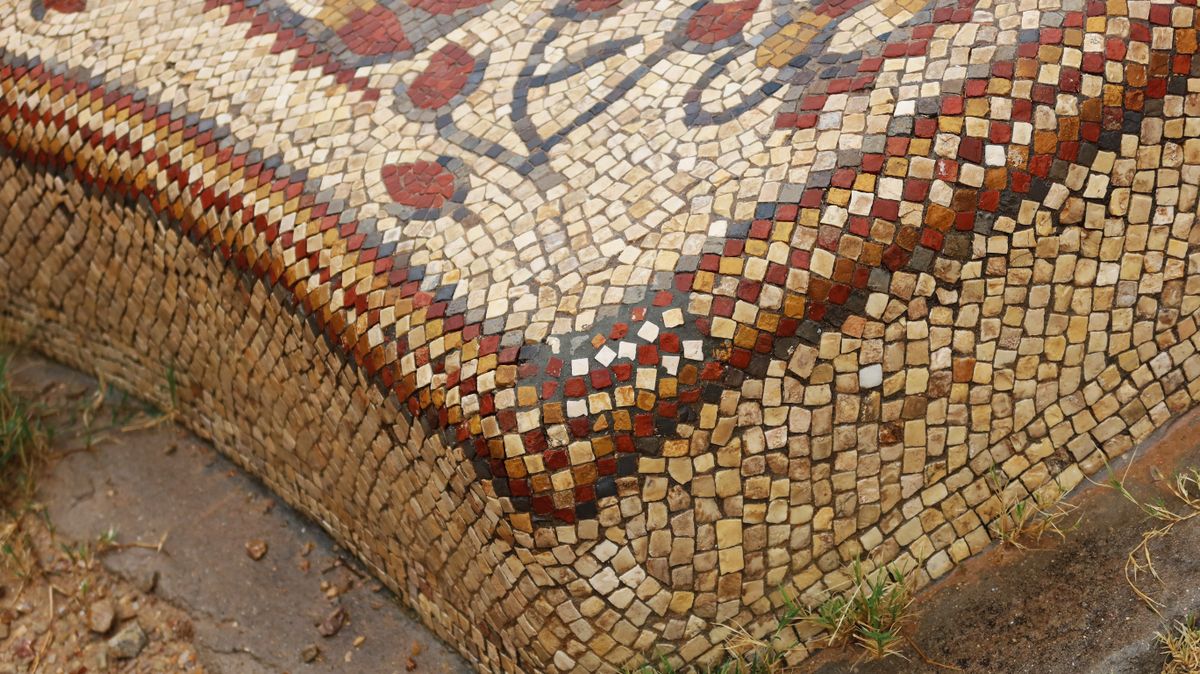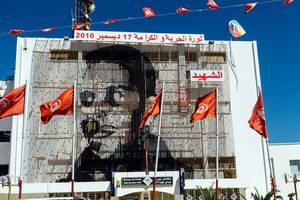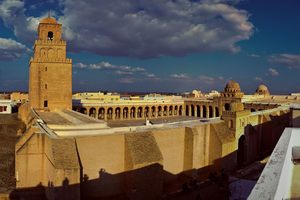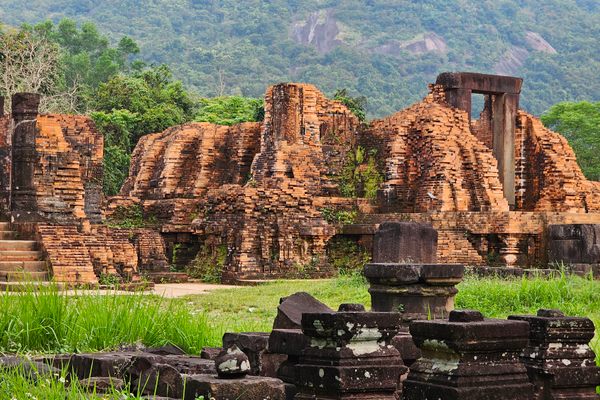About
Religious artifacts found in Ancient Roman ruins in Tunisia can be classified as Paleo-Christian, or belonging to the early Christian religion. Of the many artifacts of this kind, baptismal pools are among the most intriguing, partly because they were often decorated with stunning mosaics, and partly because many of them survived the test of time largely intact. These pools are for celebrating the Christian sacrament of baptism by full immersion, in which the person is fully immersed in consecrated water to cleanse them of all their sins and to be reborn as a new person.
The baptismal pool in Sbeitla (formerly known as Sufetula) is estimated to be from the 5th or 6th century and belongs to the Vitalis Sbeitia Church, even though the pool is not located inside the church. In fact, in Paleo-Christian structures, it was common to have a building adjacent to the church specifically designated for the administration of baptism.
This pool has two opposite sets of steps to enter and exit to facilitate full immersion. On the side, there is a section of a pillar and three bases of pillars suggesting that the pool was probably covered by a canopy. The mosaic depicts several crosses and Latin inscriptions, while the decoration mainly consists of floral patterns.
A few meters away from this baptismal pool, another pool was found later. The purpose of the second pool is less clear, as there are no steps leading in or out of it. It has the shape of a cross and is decorated with mosaics depicting fish, along with floral and geometrical patterns, but it lacks inscriptions and crosses that were common in baptismal pools of the era. In the same compound are also the Capitoline Temples, the Triumphal Arch, public baths, and common dwellings.
Related Tags
Tunisia: The Sahara, Mosaics & Star Wars Relics
A Sahara journey through ancient oases, diverse culture, & delicious cuisine.
Book NowPublished
January 18, 2024
